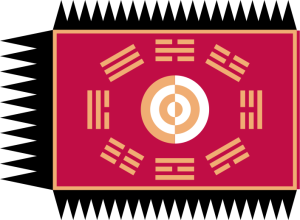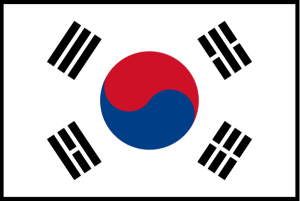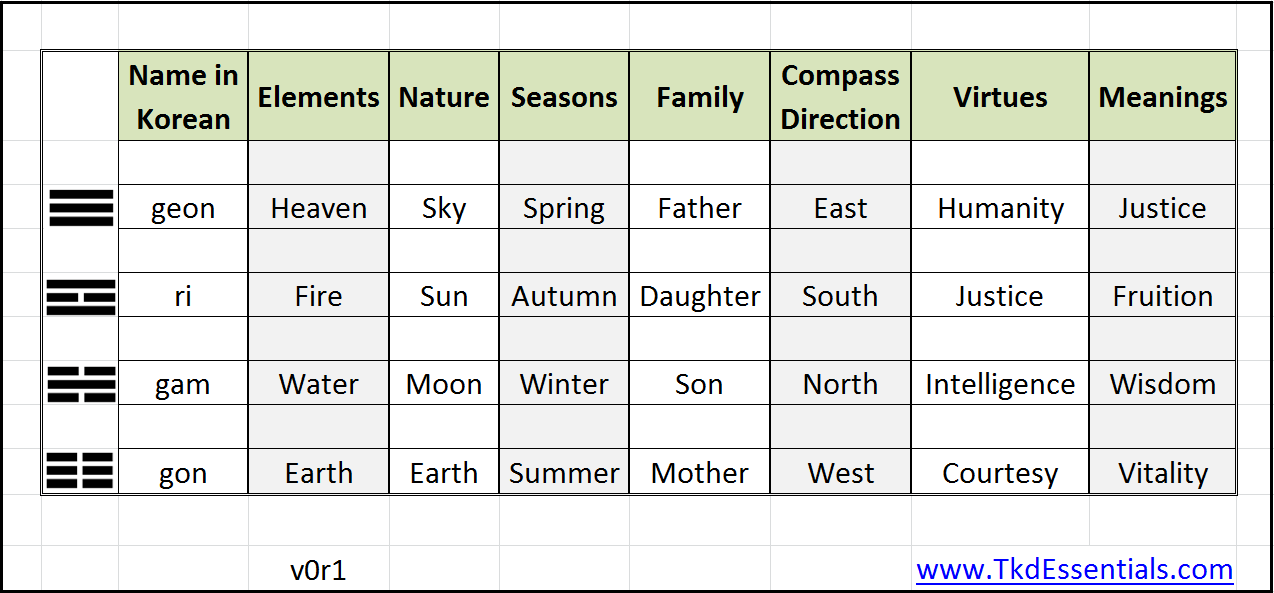by Blake Lakewood, 11/18/14
The following paragraphs give a brief description of the South Korean Flag. The discussion contains the color choice of the current flag, the significance of the color choices, and the deciphering of the trigrams.
After the founding of the Republic of Korea on August 15, 1948, the government felt that it should standardize the method of making the national flag. A special commission was formed by the government in January, 1949. This commission issued the provision on the national flag on October 15, 1949. Since then, the Republic of Korea has been using the Taegeukgi, the flag of South Korea, as the national flag.
When discussing the Taegeukgi the definition of a trigram must be given. A trigram is a figure composed of three solid or interrupted parallel lines. The significance of the trigrams is described in the following paragraph. The original Korean flag (circa 1800) had eight trigrams in an octagonal configuration around a central circle.
The present Taegeukgi is comprised of three parts: a white background, a central red / blue circle, and four black trigrams on each corner of the flag. On the current Taegeukgi, if the four trigrams are viewed as the four classical elements then: the trigram in the upper left of three black unbroken bars symbolizes heaven, the trigram in the lower left symbolizes fire, the trigram in the upper right symbolizes water, and the trigram with the three broken bars in the lower right symbolize earth.
The chart below shows the Korean name for the trigrams as well as other representations for these trigrams. The chart also includes views for: Nature, Seasons, Family, Compass Directions, Virtues and Meanings.
The white background of the flag represents the traditional color of the Korean people. It symbolizes peace and purity. The circle in the center of the flag represents the balance of the universe which is has its origin in the Yin and Yang philosophy. In the circle, the blue section signifies the negative cosmic forces, while the red section signifies the opposing positive cosmic forces.
The width vs length ratio of the flag is 3:2, meaning that if the flag was 3 feet wide, it would be 2 feet tall. You could scale up (or down) any other dimensions for the flag using the 3:2 ratio, (6 X 4, 9 X 6, 1.5X1, 1 X 2/3 ..).


